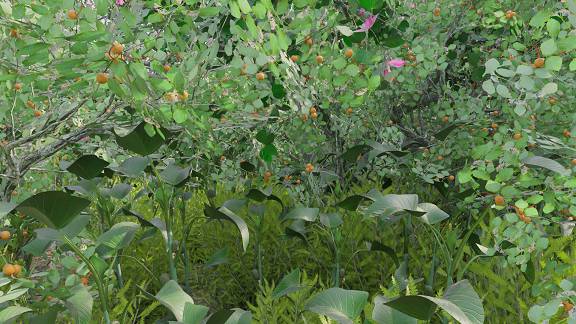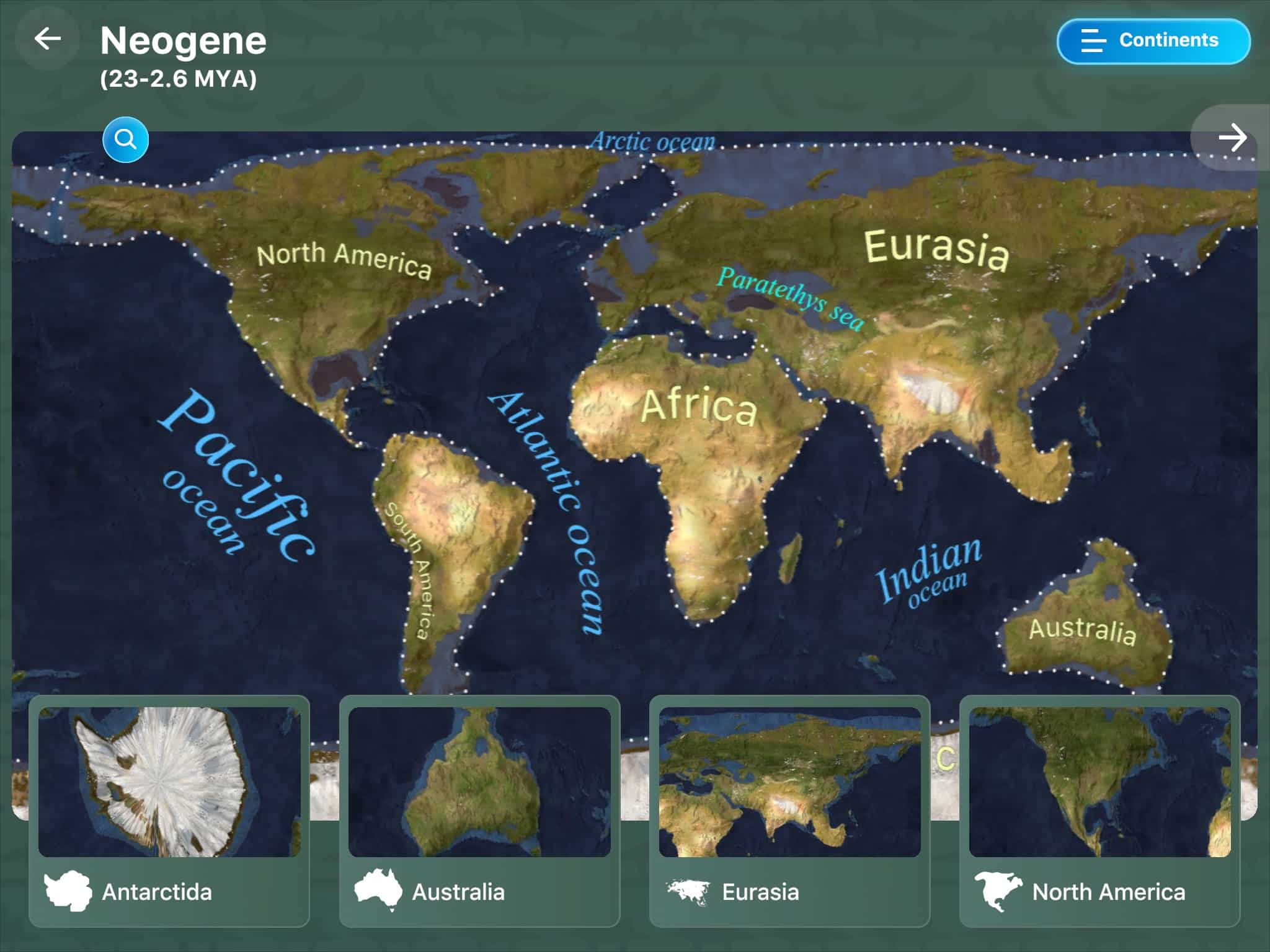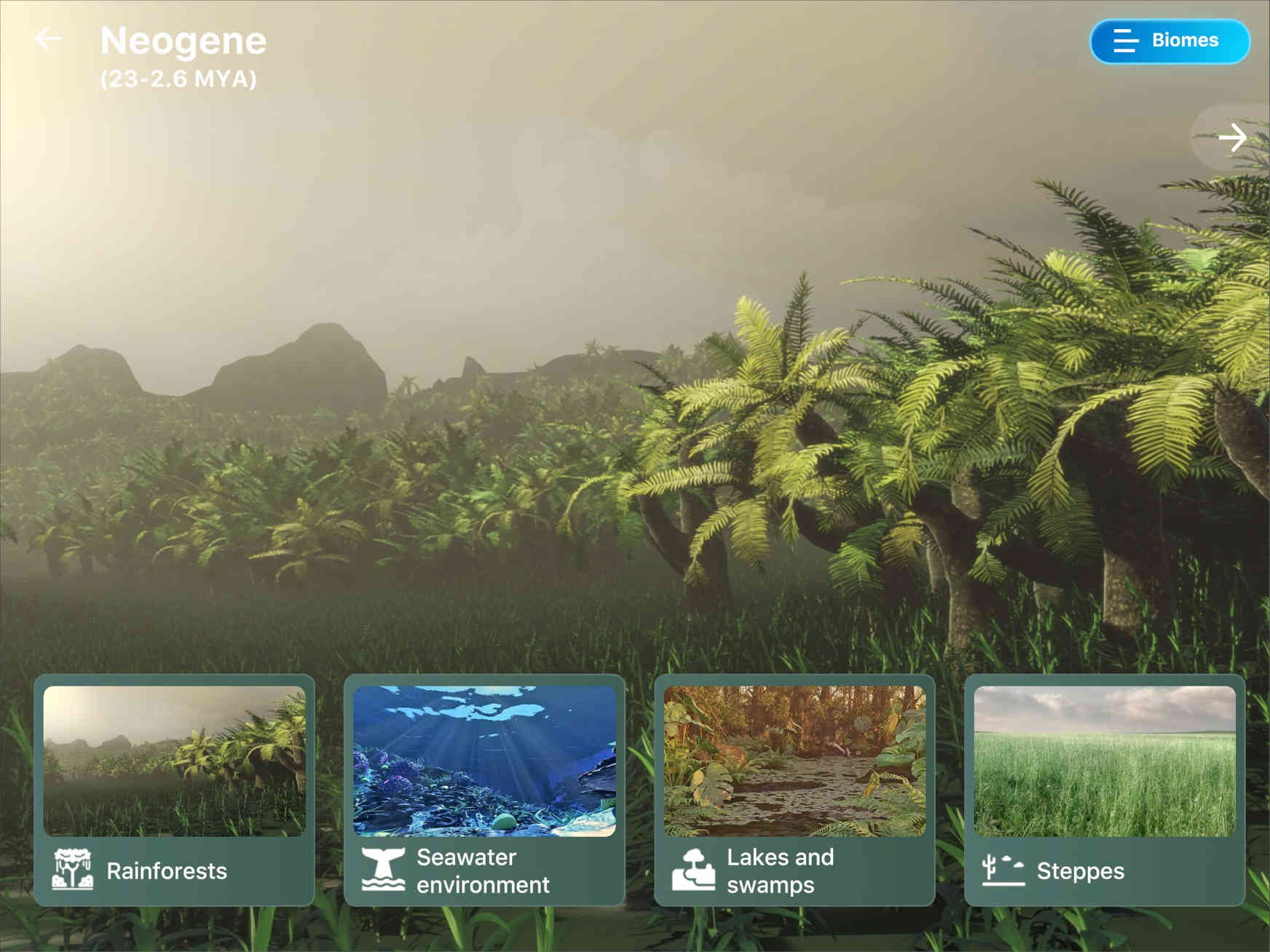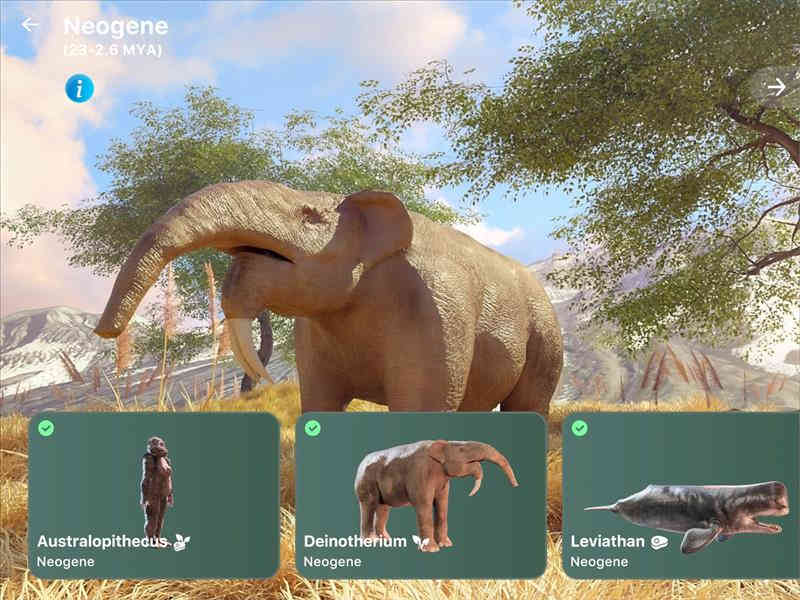Floodplains
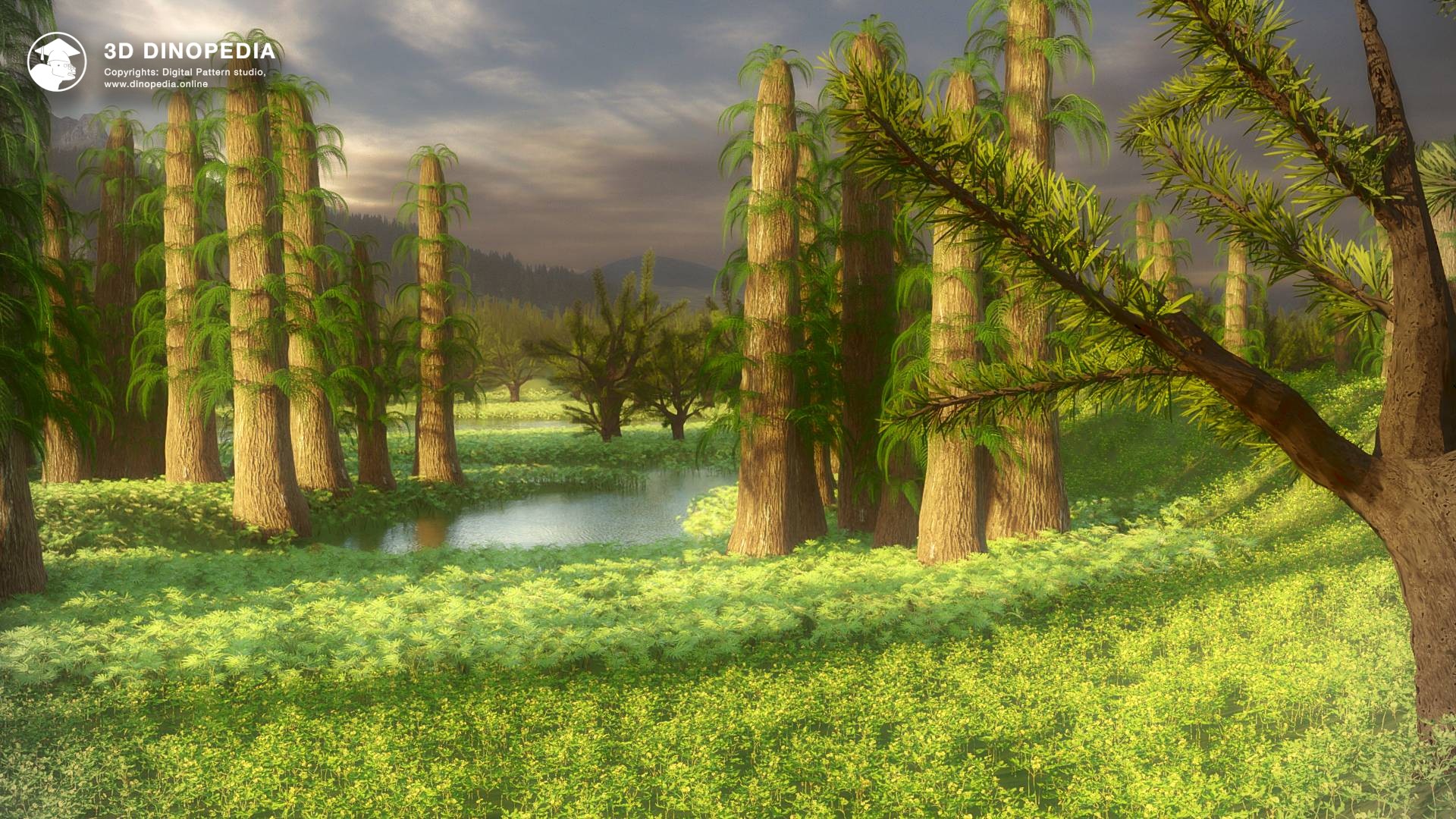
Floodplains are expansive plains located along rivers. In these areas, the river may overflow during floods.
In river valleys, when the river course changes, parts of the bed with still water - oxbow lakes - can be left behind. Some of these oxbow lakes transform into independent lakes or swamps. Sometimes, part of the soil along the riverbanks also becomes swampy. For this reason, the animal and plant life of the floodplains, lakes, and swamps can significantly intersect and even have common elements.
A key feature of floodplains is their ability to retain a large amount of moisture. Additionally, the silty soils are very fertile. This creates favorable conditions for the growth of vegetation and the existence of a high diversity of animals.
In the Neogene period, the vegetation of the riverbanks was almost indistinguishable from the present day. On the banks, one could find familiar walnut trees (Juglandicarya), willows (Salix), various shrubs, such as sweet fern (Comptonia)...
In river valleys, when the river course changes, parts of the bed with still water - oxbow lakes - can be left behind. Some of these oxbow lakes transform into independent lakes or swamps. Sometimes, part of the soil along the riverbanks also becomes swampy. For this reason, the animal and plant life of the floodplains, lakes, and swamps can significantly intersect and even have common elements.
A key feature of floodplains is their ability to retain a large amount of moisture. Additionally, the silty soils are very fertile. This creates favorable conditions for the growth of vegetation and the existence of a high diversity of animals.
In the Neogene period, the vegetation of the riverbanks was almost indistinguishable from the present day. On the banks, one could find familiar walnut trees (Juglandicarya), willows (Salix), various shrubs, such as sweet fern (Comptonia)...
 3D BIOMES
3D BIOMES

